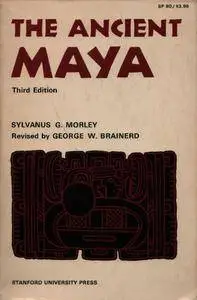Sylvanus G. Morley, "The Ancient Maya, Third Edition"
1956 | ASIN: B0027EQNF8, B000OL8V1A | 519 pages | Djvu | 31 MB
1956 | ASIN: B0027EQNF8, B000OL8V1A | 519 pages | Djvu | 31 MB
PREFACE TO THE FIRST EDITION
THE STORY of the Maya has been “in the writing” for more than sixteen hundred years j in fact, ever since the early part of
the fourth century of the Christian Era, when the ancient Maya themselves began to carve their earliest known records on stone monuments.
This purely Maya contribution to their history covers about twelve centuries (a.d. 320-1541), and while very little of his¬
torical detail as we understand it has survived, the Maya hieroglyphic inscriptions, nevertheless, furnish us with a more accurate chronological background than that found anywhere else in aboriginal America.
During the century (1550-1650) following the Spanish conquest, a number of native as well as Spanish writers carry on the
story for us. Educated Maya who had been taught by the early Catholic missionaries to write their language in the characters of the Spanish alphabet in order to facilitate their instruction in the Catholic faith set down brief summaries of their own ancient history, probably copied directly from their then still surviving historical manuscripts in the Maya hieroglyphic writing.
In addition to the foregoing native sources, several of the early Franciscan Fathers have left admirable accounts of the Maya as they were in the middle-sixteenth century, by far the most important being the contemporary narrative by Fray Diego de Landa, the second Bishop of Yucatan. His Relación de las cosas de Yucatán,f written in 1566 and extensively quoted in the following pages, is unquestionably our leading authority on the ancient Maya.
During the next two centuries (1650-1840) very little new was added to the Maya story, but in 1839-1841 John Lloyd
Stephens, the American traveler, diplomat, and amateur archaeologist, accompanied by Frederick Catherwood, an English artist, visited the Maya area twice and embodied his impressions thereupon in two outstanding works: Incidents of Travel in Central Americay Chiapasy and Yucatan (1841) and Incidents of Travel in Yucatan (1843). Both were illustrated by Catherwood’s superb drawings; today, more than a hundred years later, they still remain the most delightful books ever written about the Maya area…



